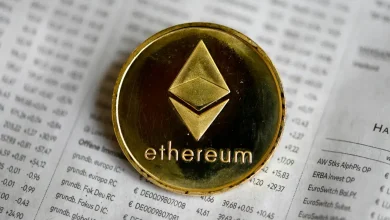Lower ETH Fees Ahead? Gas Limit Climbs Amid Validator Push

The Ethereum network has achieved a notable increase in its capacity, which promises to lower transaction fees and enhance scalability. This development follows a rise in the network’s gas limit over the weekend, propelled by growing consensus among validators participating in a grassroots initiative to expand the blockchain’s throughput.
Over the weekend, Ethereum’s gas limit, which dictates the maximum computational work allowed in a single block, climbed to over 37.3 million units. This represents a nearly 3% increase from the end of last week and marks the most significant upward adjustment since February. The higher limit has already boosted the network’s capacity, with transaction throughput approaching 18 transactions per second (TPS), a clear improvement from the 15 TPS observed after the last major increase.
Validators Signal Strong Support for Higher Limits
The recent surge in the gas limit is a direct result of the “pump the gas” campaign, a movement started by Ethereum developers in March 2024. The initiative encourages validators, who are responsible for processing transactions and creating new blocks, to signal their support for a higher limit. The campaign’s ultimate goal is to raise the gas limit to 45 million.
Support for this change has gained significant momentum. Ethereum co-founder Vitalik Buterin highlighted the growing consensus in a statement on Sunday, noting, “Almost exactly 50% of stake are voting to increase the L1 gas limit to 45 million.” Data from GasLimits.pics confirms this trend, showing that 47.2% of all staked validators are now in favor of the increase. Buterin also added that recent technical improvements to Geth, Ethereum’s most popular client software, make these scaling adjustments safer to implement.
By increasing the gas limit, each block can accommodate more transactions or more complex smart contract executions. This expanded block space helps alleviate network congestion, which in turn can lead to a reduction in “gas fees”—the cost users pay to have their transactions processed on the layer-1 network.
Market Reacts to Increased Network Activity
The technical upgrades on the Ethereum network are occurring alongside a period of heightened on-chain activity and positive price action for Ether (ETH). The number of daily transactions has risen from approximately 1.1 million in April to current levels of around 1.4 million. This surge in network usage has coincided with a strong market performance for ETH, which has appreciated by 54% over the past month. The asset briefly surpassed the $3,800 mark on Sunday, reaching a seven-month high amid growing interest from institutional investors and ETF-related activities.
This development is significant for the Ethereum ecosystem as it directly addresses one of the network’s most persistent challenges: scalability and high fees. A higher gas limit on the base layer provides immediate relief and demonstrates a commitment to on-chain scaling, which complements the ongoing development of layer-2 solutions. For users and investors, this could lead to a more efficient and cost-effective network, potentially bolstering Ethereum’s position as the leading smart contract platform.


